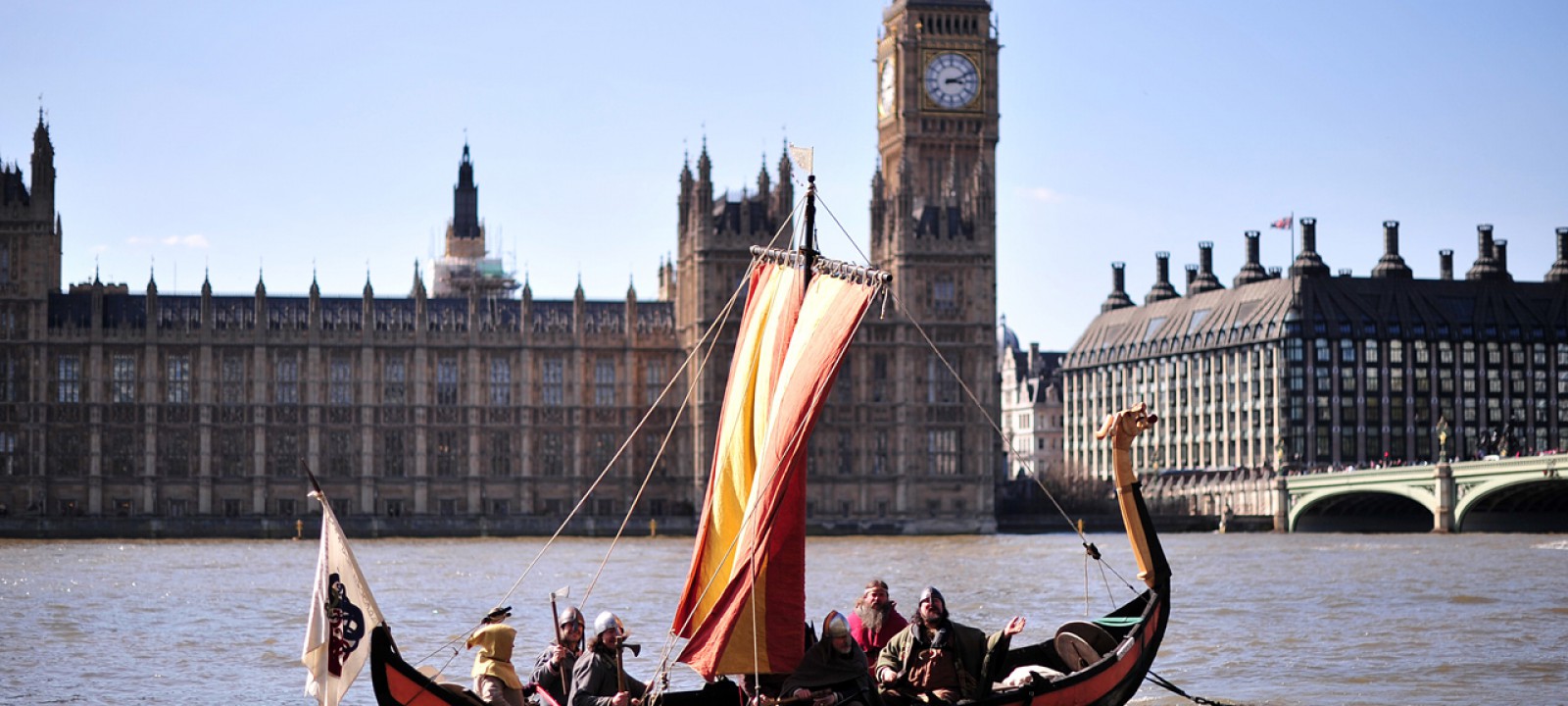Hello ladies and gents this is the Viking telling you that today we are talking about
London
London was founded by the Romans, but following their withdrawal the town fell into ruins. It was not until the 9th century that it again began to make its mark among English towns.
London was attacked by the Vikings several times. An during the reign of Cnut the Great's it was one of the most important towns in England.
During the reigns of Edward the Confessor and Harold Godwinson, London's significance became even greater, and while William the Conqueror was on the throne, the town acquired special, royal privileges.
The Romans gave London its first bridge across the Thames. They also fortified the town with a ring wall. But after their withdrawal the area within the town wall became virtually deserted. It was not until the middle of the 7th century that an actual town again became established.
Viking attacks
By the 9th century London was yet again a powerful and wealthy town attracting the attention of the Danish Vikings. They attacked London in AD 842, and again in AD 851, and The Great Army spent the winter in the town in AD 871-72.
Alfred the Great, who became king in AD 878, forced the Vikings to make peace and fortified the town. During the next century London became the most powerful town in England. Coins were minted at eight different places in the town, trade flourished and cloth and jewellery were produced, also for export. At the same time, London also became an important political centre – it was here that the king held his counsel and laws were issued.
When Ethelred the Unready became King of England as a very young man, he made London his capital. During his reign the Vikings once more showed an interest in England – and London. Svein Forkbeard attacked London unsuccessfully in AD 994 and again in AD 1013. Ethelred was forced to pay Danegeld several times and had finally to flee the country. Svein died in AD 1014, and his son, Cnut the Great, took over leadership of the army and besieged London. Ethelred died in AD 1016.
Cnut became King of England and in AD 1018 he was able to send his army back to Denmark. He burdened the English population with the tax thingild to pay for the maintenance of a small army. He also placed his Danish garrisons around London, including by the church St. Clemens Danes. Generally, Cnut was a popular king, and during his reign peace prevailed in England. Cnut died in AD 1035 and one of his sons, Harold Harefoot, took over the English throne.
and as always have a chilled day from the Viking

Comments
Post a Comment